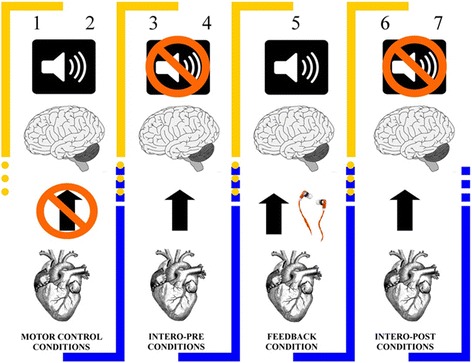Figure 1.

Experimental design of heartbeat detection task (HBD). The HBD task, a motor tracking test, is an experimental procedure in which participants tap a keyboard along with their heartbeats in different conditions (each lasting 2 minutes). First, as motor-control conditions, participants followed an audio-recording of a synchronic heartbeat (1) and then a non-synchronic heartbeat (2). Next, they followed their heartbeats without external feedback (intero-pre conditions) in two intervals (3 & 4). Then, in a feedback control condition, they did the same while receiving simultaneous auditory feedback of their own heart provided through online EKG register (feedback condition), (5). Finally, they followed their own heartbeats without feedback (intero-post conditions) two times (6 & 7). These conditions offer a measure of audio-motoric performance (first and second conditions), and a cardiac interoceptive measure prior to (intero-pre condition) and after (intero-post condition) the feedback condition. During this task we also measured heart rate (HR) and heart rate variability (HRV) to control their possible influence on IS (details in Additional file 1: 3.5).
